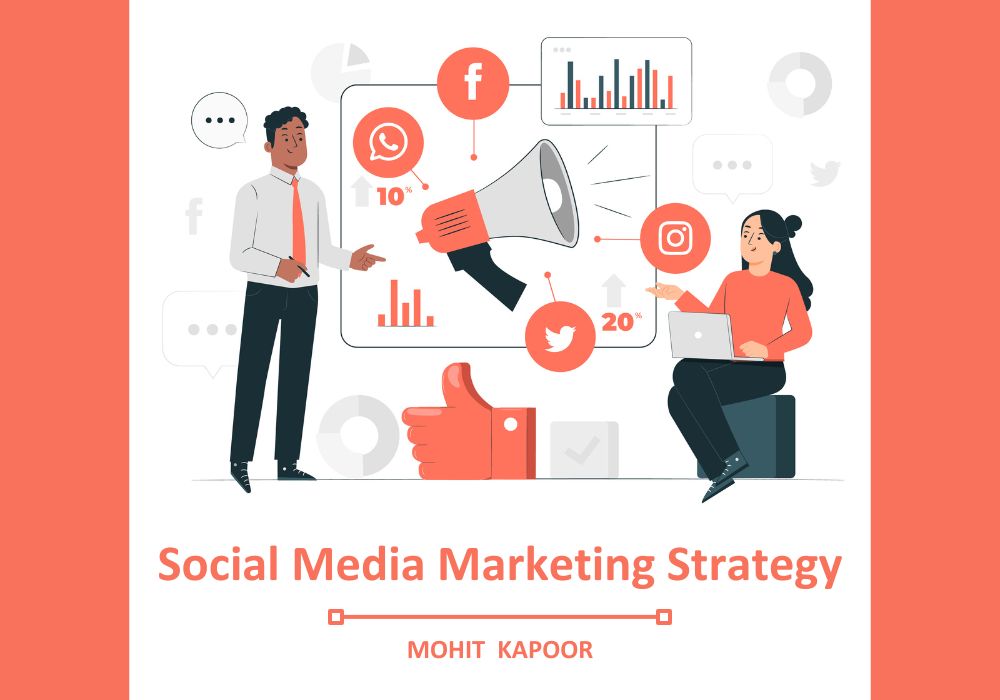Social media marketing isn’t about chasing trends or boosting random posts—it’s about engineering brand impact through platforms people scroll daily. But let’s be honest: most marketers either focus too much on vanity metrics or spread budgets thin without aligning to the funnel.
If you want to build a strategic, performance-driven social media engine, here are the 9 parameters that actually matter. This isn’t fluff—it’s the lens I use when planning media budgets and digital strategies that drive 7X ROAS for clients.
1. Clear Objectives (Because Strategy Starts at the Top)
Before you post anything, define the purpose. Is it awareness? Lead gen? Sales? Community?
Here’s a quick funnel-based breakdown:
| Funnel Stage | Typical Objective | Winning KPI |
| TOFU (Top) | Reach, Brand Recall | CPM, Impressions |
| MOFU (Middle) | Engagement, Leads | CTR, CPL, Engagement % |
| BOFU (Bottom) | Sales, Conversions | ROAS, CAC |
Micro-example: For a D2C skincare brand, we ran Reels at the TOFU level (CPM ₹35), retargeted product page viewers with carousels at MOFU (CPL ₹90), and pushed limited-time offers to cart abandoners at BOFU (ROAS 6.2X).
2. Targeting That Goes Beyond Demographics
If your targeting is stuck at “males 25-34 in Mumbai,” you’re leaving conversions on the table.
Instead, combine:
- Behavioral signals (purchase intent, video views)
- Psychographics (interests, brand affinities)
- 1P Data (Custom lists) + look-a-like Targeting (high intent leads + scale)
- Platform-specific data (Meta: engagement; LinkedIn: job title; YouTube: watch time)
Micro-example: While promoting a SaaS tool, we built lookalikes of users who triggered the “Start Free Trial” event, layered them with interest in “Zapier” and “No-code automation,” and saw CPLs drop by 38%.
3. Platform Strategy (Because One Size Doesn’t Fit All)
Every platform influences a different stage of your funnel—some spark discovery, others drive decisions. Your content and spend strategy should reflect that.
| Platform | Best For | Content Style |
| Meta (IG+FB) | Mass reach, storytelling | Reels, Carousels, Polls |
| B2B, high-ticket, thought-leadership | Text posts, Docs, Video | |
| YouTube | Education, demand creation | Explainers, Shorts, Reviews |
| TikTok | Virality, brand personality | Native UGC, Trends |
Micro-example: A fintech brand we worked with used YouTube Shorts for awareness, then retargeted viewers with a lead-gen form ad on Instagram—resulting in a 4.5X uplift in lead quality.
4. Content & Creative That Converts
The scroll is brutal. You have seconds—maybe milliseconds—to hook someone.
What works:
- Mobile-first visuals (subtitled videos, bold headlines)
- Clear narrative: Hook → Value → CTA
- A/B testing: Copy, CTA, and first 3 seconds
Micro-example: For a hiring platform, we A/B tested two ad copies—one started with “Tired of bad hires?” and the other with “Find top candidates in 48 hours.” The latter saw 2X CTR and 32% lower CPA.
5. Smart Budget Allocation
Don’t let your budget run on autopilot. Align your media spend with core business goals—whether it’s visibility, engagement, or conversions, your budget should back the mission:
- Split by platform + funnel stage
- Use lifetime budgets for control, daily for learning
- Apply frequency caps to avoid ad fatigue
- Monitor pacing vs. performance daily
Micro-example: During a Diwali sale for an e-commerce client, we allocated 60% budget to high-intent remarketing pools (ROAS 8X), 30% to awareness (CPM ₹28), and 10% to new platform testing (Pinterest). Smart split = big wins.
6. Performance Tracking & Optimization Loops
You can’t grow what you don’t measure. Set up a real-time feedback loop:
- Metrics to watch: CTR, Frequency, Conversions, ROAS
- Optimization triggers: High CPC? Test new creatives. Low CTR? Check audience fit.
- Attribution: Go beyond last-click. Think MMM or data-driven attribution.
Micro-example: In a campaign for a food delivery app, we saw frequency >4 led to CTR drop-off. Swapped in fresh creative, added a 3-day delay between impressions, and cut CAC by 22%.
7. Community Management (Often Ignored, Always Powerful)
If content builds reach, community builds trust. Respond to comments. Solve queries fast. Use DMs to bridge curiosity into action—personal responses can nudge warm prospects toward conversion.
- Moderate comments regularly
- Encourage UGC and reviews
- Use polls and stickers for interaction
Micro-example: A fashion brand used IG Stories to ask “Which color should we launch next?” The poll response rate was 41%, and the winning variant outsold others 3:1—co-created demand.
8. Compliance & Brand Safety
Stay on the right side of platform policies, especially if you’re in sensitive categories.
- Review ad content against Meta/TikTok ad policies
- Avoid misleading claims or exaggerated CTAs
- Apply exclusion filters like negative keywords or placement blocks to keep your ads away from irrelevant or risky content.
Micro-example: A nutraceutical client’s ads were rejected due to health claims. We rewrote copy to highlight “benefits backed by clinical studies” and received 100% ad approvals going forward.
9. Trends, Virality & Innovation
Relevance matters. Use platform-native features and ride trending formats (responsibly).
- Use memes, audio trends, or “duets” for native appeal
- Jump on moment marketing, but filter through brand tone
- Experiment: 70% core, 20% experiments, 10% trending
Micro-example: A real estate brand jumped on a viral audio trend with a 7-second video of “what ₹1.2 Cr gets you in Mumbai.” It hit 1.1M organic views and brought in 300+ DMs—without paid spend.
Final Word: Strategy Wins Over Stunts
Social media marketing isn’t just content + clicks. It’s a strategic blend of intent, insight, and iteration. Brands that win on social don’t just post—they plan, test, measure, and evolve.
Whether you’re spending ₹10,000 or ₹10 crore a month, these 9 parameters will keep your efforts aligned to outcomes.

Leave a Reply